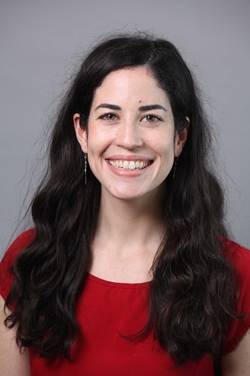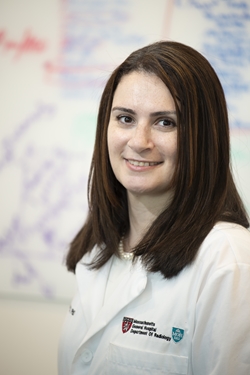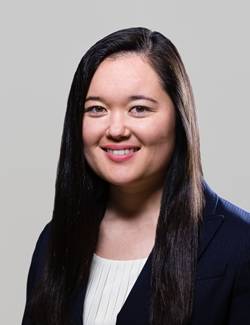Radiology residents and fellows at Massachusetts General Hospital volunteer for clinical service in response to COVID-19.
- Leaders at Massachusetts General Hospital have asked radiology residents and fellows to volunteer to serve in a clinical capacity to respond to the COVID-19 pandemic.
- About a dozen radiology residents and fellows have volunteered to serve in the wards as internal medicine interns and junior medical residents on day and night shifts.
- The volunteers see it as part of their responsibility as physicians to help in this time of crisis, and they encourage others who have the ability to serve on the frontlines to join them.
At MGH, leadership issued a request for volunteers among its radiology trainees — and more than a dozen diagnostic and interventional radiology residents and fellows have answered the call. The move comes at MGH and other hospitals as the number of confirmed COVID-19 cases has surged in the U.S., recently surpassing all other nations in the world and threatening to overwhelm hospitals across the country. “As Thomas Paine famously said, ‘The times have found us,’” notes Samantha Harrington, MD, MSc, former chief radiology resident (R3/PGY4) at MGH who is among the residents and fellows who have volunteered for clinical duty. “This is a once-in-a-hundred-years flood; the standard rules don’t apply.”
In the coming weeks, most of the radiology residents and fellows who have volunteered for clinical service at MGH will join COVID-19 surge teams as internal medicine interns on day shifts. According to Harrington and Flores, they will be admitting and discharging patients, providing treatments and administering tests — all under the supervision of an internal medicine attending. “As doctors, we took an oath that into ‘whatsoever house I enter, I will enter to help the sick,’” Harrington says. “Our radiology residents have been truly amazing for stepping up. I am just so unbelievably proud of how they’ve responded in this crisis.”

Samantha Harrington, MD, MSc, former chief radiology resident (R3/PGY4) at MGH who has volunteered for the wards, says she is proud of the radiology residents and fellows who are stepping up in this time of need. |
Residents and fellows who have more extensive clinical experience and training, including Dania Daye, MD, PhD, interventional radiology fellow at MGH, will serve as junior medical residents on night shifts. “We will be the responding clinician taking all of the primary calls from the nurses about any issues that come up with the patients and try to address any of their needs,” Daye explains. “As radiologists, this is a tremendous opportunity to show that we are first and foremost physicians and that we care about patients coming first.”
Learning Protocols, Staying Safe
The volunteers are drawing upon training from their medical school intern year and rotations to help in the wards. Additionally, MGH’s department of medicine has provided training materials and online sessions to help familiarize radiology residents and fellows with COVID-19 treatments and protocols. “All of us residents and fellows who have volunteered have spent time reviewing the training information from the department of medicine, reading materials received from colleagues, and working together with internal medicine resident volunteers to optimize our electronic medical record skills, so we can hit the ground running,” says Mari Tanaka, MD, an integrated interventional and diagnostic radiology resident (PGY-3) and current chief resident who volunteered for clinical duty.In addition to training the radiology volunteers for the clinical response, MGH’s department of medicine provided training every hour about how to properly don and doff personal protective equipment (PPE). PPE access has been a concern among hospitals, healthcare providers, and state legislators nationwide, with many reporting too little PPE for everyone responding to the pandemic. Daye says that MGH has a disaster stockpile of PPE, so she feels confident that the hospital has enough PPE for everyone. “The most important issue with PPE is knowing how to don and doff it without infecting yourself,” she says. “The risk of infection to healthcare workers remains low as long as you know what you’re doing, and the training has prepared us for that.” Still, Flores says that provider health and wellbeing remains a concern. “We’re proud of the volunteer residents and fellows for doing this, but we are absolutely praying for their safety,” he says. “It shows how much radiologists are committed to patient care.”
 Dania Daye, MD, PhD, interventional radiology fellow at MGH who has volunteered to serve in the wards, says that “this is a tremendous opportunity to show that [radiologists] are first and foremost physicians.” |
Lending a Hand
As the numbers of COVID-19 cases rise, more hospitals across the nation might look to radiology and other specialty areas for help in responding to the pandemic. Tanaka says that radiology trainees and others should consider it a privilege to have the choice about whether to serve in the wards. Many other providers, she points out, don’t have a choice. “My advice for potential volunteers is to review available data about outcomes for patients affected by COVID-19 based on age and co-morbidities, figure out what your risk profile is, and determine if you can accept that,” she says. “Next, have a clear discussion with your loved ones about the reality of the situation and why you want to help. Listen to their concerns and address them to the best of your ability with data, if possible. If, for whatever reason, you cannot clear all these steps and volunteer for the wards, support your colleagues who can.” Mari Tanaka, MD, an integrated interventional and diagnostic radiology resident (PGY-3) and current chief resident who volunteered for clinical duty, says radiologists have skills that can be polished quickly to provide clinical care. |
Whatever role they play, radiologists have the expertise necessary to improve the response and help patients in need. “This is a global problem that has affected all of us,” Tanaka says. “It will require all of us doing our part and stepping out of our comfort zone to address this together in a way that results in the least amount of lives lost. Radiologists, first and foremost, are physicians. Through all of our years of training, we developed skills that can be polished quickly and that are needed now. Others are asking for our help. As doctors and human beings, if we can help, we should.”
Creative Commons
Answering the Call by American College of Radiology is licensed under a Creative Commons Attribution-NonCommercial-NoDerivatives 4.0 International License. Based on a work at www.acr.org/imaging3. Permissions beyond the scope of this license may be available at www.acr.org/Legal .Share Your Story
Have a case study idea you’d like to share with the radiology community? To submit your idea, please click here.
Next Steps
- Find out if your hospital is looking for volunteers from your specialty to serve in the wards to provide clinical care as COVID-19 cases surge.
- Understand the potential risks of providing clinical care and determine whether you can serve. If not, support your colleagues who can.
- Review all of the training materials your hospital offers to familiarize yourself with COVID-19 protocols.
Author
Jenny Jones, Imaging 3.0 Managing Editor
Join the Discussion

#Imaging3 on Twitter
Call for Case Studies
